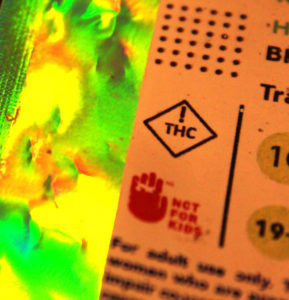Start low go slow

The consumption of cannabis edibles was made legal in Canada on Oct. 17. 2019, leaving some residents and organizations concerned for the public’s safety on the road.
Chaouki Hamka is the community leader for Mothers Against Drunk Driving in Windsor Essex county. He is also on the MADD Canada National Board of Directors and the Ontario West Regional Director and has been with the organization for 15 years.
Hamka says smoking and eating cannabis are two completely different things. He said it takes a lot longer to start feeling the effects of edibles. He said when smoking a joint or inhaling cannabis, the effects can be felt right away but can sometimes take up to 30 minutes whereas edibles can take anywhere from 30 minutes to four hours to kick in. Once activated, the effects of edibles last significantly longer than a regular cannabis high, sometimes up to 12 hours. This all depends on the methods of consumption and whether the person using the product is an experienced user.
“The higher the THC content, the greater the impairment and the greater the risk of an adverse effect,” said Hamka. “Health Canada’s suggestion is to start low and go slow and begin with products that contain 2.5mg of THC or less.”
All forms of cannabis containing THC can impair your driving ability, said Hamka. The drug can impair judgement, slowing down your reaction times and having a negative effect on your motor skills. Hamka said because edibles can take a while to kick in many people mistake this time for sobriety which can be confusing if you are inexperienced.
“People may think they are okay to drive, when in fact the product has not been fully absorbed into the body,” said Hamka. “The body of that person may take the risk of driving and being behind the wheel when they start to experience the drugs effects.”
A survey by the Canadian Automobile Association shows there are a great number of people who drive after smoking cannabis. The data collected from CAA shows that 1.2 million drivers in Ontario have driven a vehicle after consuming cannabis. At least 72 per cent of these people said they waited up to three hours or less before getting behind the wheel and 27 per cent admitted to driving while feeling very, or somewhat high.
“It’s very difficult to put a number on it,” said Hamka. “But again, because of the different forms of cannabis, the different strains and THC levels it affects everybody differently. I think the safest approach is just not to drive if you want to be consuming cannabis in any form. You can arrange for sober transportation.”
The federal government has regulated who sells cannabis, whether it is loose leaf cannabis, dried cannabis or edibles. In 2018, to prevent people from driving under the influence of cannabis, laws and regulations were put into place in Ontario to prohibit people driving with a certain amount of THC in their blood. People caught driving under these offences will be fined, have their licenses suspended and can even face criminal charges.
Although it can sometimes be difficult for people to detect whether someone has consumed edibles, Constable Talya Natyshak said the Windsor police are trained especially for cases of people driving with edibles in their system. Natyshak said there are ways to detect impaired drivers whether it is an officer noticing odd behaviour such as their speech and movement or their driving ability.
“There’s many, many different factors in terms of detecting impairment and every case is very different in that sense,” said Cst. Natyshak. “It could be that they have visible drugs or alcohol inside the vehicle with them, it could be they admit to it, we also do have some what we call Drug Recognition Officers who have even further training so they could come out to see, and to do their testing on those individuals.”
Cst. Natyshak said the Windsor Police Service will do everything they can to monitor people driving under the influence to the best of their ability by spreading awareness.
“Marijuana, although legal now has been around for a long time, and we will continue to do everything we can to keep our community safe,” said Natyshak. “We are always reaching out to the community through awareness initiative and through education. Our Community Services Branch does a fantastic job at getting out into the community and spreading that awareness too whether it be youth or the entire community. One of our jobs is to prevent crime through education and that is one of the ways we do that.”
To find out more information about cannabis and road safety in Ontario go to https://www.caasco.com/advocacy/road-safety/cannabis-impaired-driving.
SIDEBAR
The first offence is for people driving with two nanograms, but less than five nanograms of THC per millilitre of blood, the second is driving with five nanograms or more of THC per millilitre of blood and lastly driving with a combination of 50 milligrams of alcohol or more plus 2.5 nanograms of THC per millilitre of blood.


